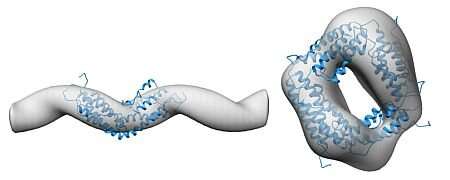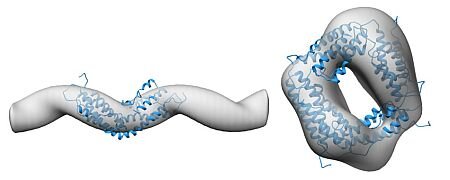New study reveals possible causes of psychiatric disorders

In a new study, scientists from Forschungszentrum Jülich and Heinrich Heine University Düsseldorf (HHU) have demonstrated for the first time that improper protein conformation is linked to the development of certain psychiatric disorders. The investigations focused on the protein called disrupted in schizophrenia 1 (DISC1). A dysfunction of DISC1 has already been observed in disorders such as schizophrenia, bipolar disorders, and severe depressions. The researchers were able to show that DISC1 can give rise to amyloid fibrils that have noticeable similarities with fibrils found in neurodegenerative diseases such as Alzheimer’s and Parkinson’s. The study was published in the journal Translational Psychiatry.
The causes of chronic mental illnesses are far from being completely understood, which is why there is a lack of suitable treatments. However, research over the last two decades has shown that a dysfunction of the DISC1 protein is linked to various psychiatric disorders. DISC1 is a multifaceted protein that fulfills countless functions in cells; for instance, the protein is crucial for early stage neuronal development. It acts as a multifunctional scaffold protein and forms complexes with over 300 different protein partners.
In their study, the researchers combined structural biology and biophysical investigations. The results of NMR spectroscopy and electron microscopy indicate that one of the regulatory domains of DISC1 not only forms symmetric oligomers—molecules comprised of several units with the same or similar structures—in a certain region of the protein, but also gives rise to fibrils—highly ordered protein components strung together—that closely resemble amyloid fibrils, which can also be found in deposits for neurodegenerative diseases. Such fibrils are the causes of diseases like Parkinson’s and Alzheimer’s.
The authors also show that the symmetric oligomers cooperatively associate with two other protein partners that are essential for neuronal development and cellular growth.
Source: Read Full Article
